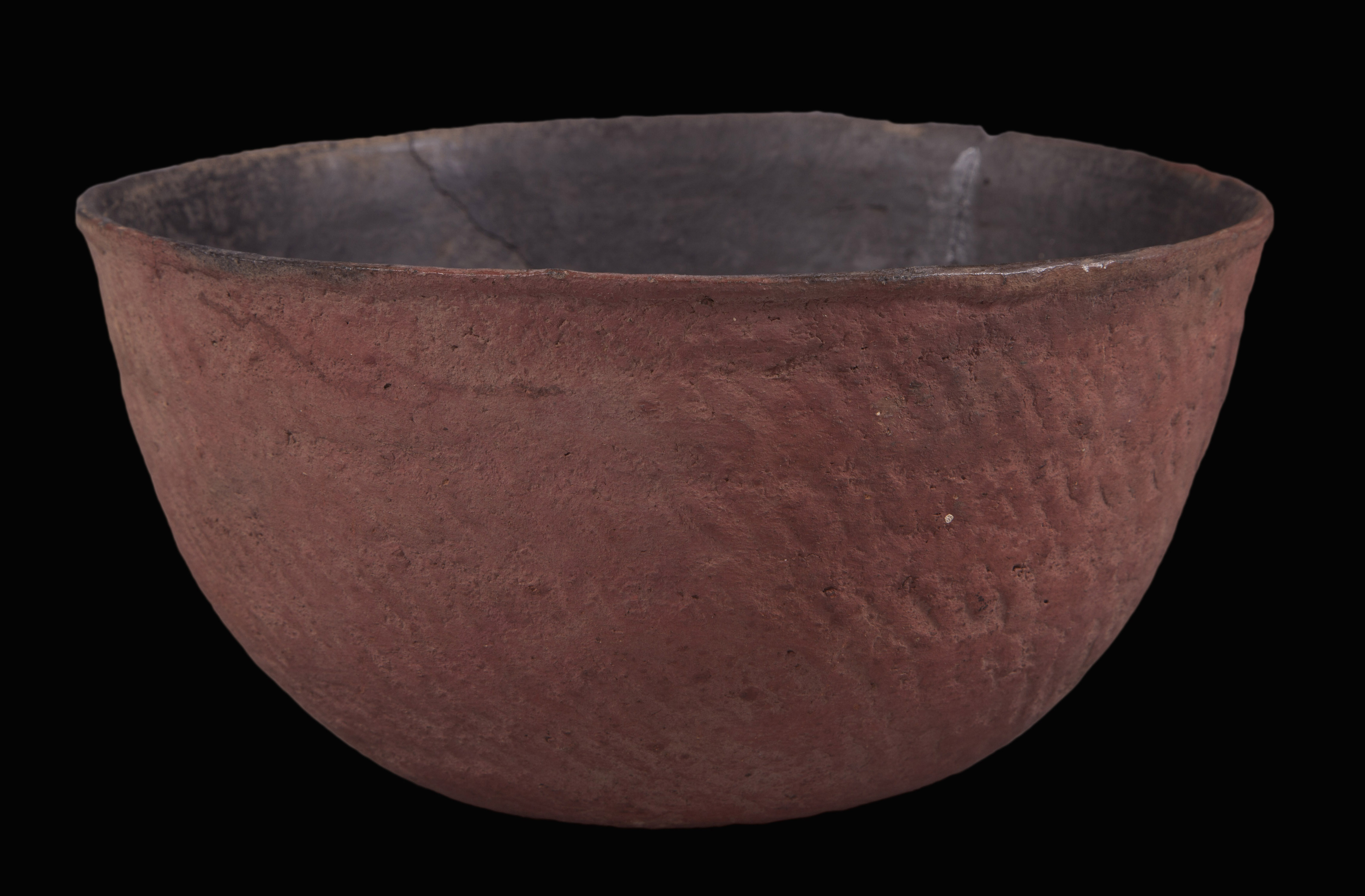Salado Red is the only undecorated type of Roosevelt Red Ware. This type is found primarily in the Roosevelt Basin, Arizona.
Archaeological Culture: Salado
Date Range: A.D. 1250-1450.
Construction: By coiling.
Firing: In an oxidizing atmosphere.
Core Color: Gray to black, tan to brick-red.
Temper: Diabase-rich sand, occasionally ground sherds.
Surface Finish: Smoothed, coils obliterated or unobliterated; bowl interiors smudged and polished; jar neck interiors smudged and polished.
Surface Color: Red (occasionally brown or black exteriors from fireclouds and over-firing).
Forms: Bowls, jars, mugs, effigies.
Decoration: No painted decoration. The “slip” is a hematite wash.
Comparisons: Gila Red and Salt Red, which were made by paddle-and-anvil. Tonto Red and Tonto Corrugated are less finely made, with larger coils.
Variants:
- Salado Corrugated – the same as Salado Red, except indented corrugated.
- Salado White-on-red – the same as Salado Red, except with the addition of simple white painted designs.
Comments: Lyons and Clark (2012:30) do not consider Salado Red or its variants to be Roosevelt Red Ware.
Compiled from the following sources:
Clark, Jeffery J. (2001) Tracking Prehistoric Migrations: Pueblo Settlers among the Tonto Basin Hohokam. Anthropological Papers No. 65, University of Arizona, Tucson.
Lyons, Patrick D., and Jeffery J. Clark. (2012) A Community of Practice in Diaspora: The Rise and Demise of Roosevelt Red Ware. In Potters and Communities of Practice: Glaze Paint and Polychrome Pottery in the American Southwest, A.D. 1250-1700, edited by L.S. Cordell and J.A. Habitcht-Mauche, pp. 19-33. Anthropological Papers No 75. University of Arizona, Tucson.
Muncaster, Lara Danielle. (2010) A Comparison of White-on-red Archaeological Ceramics from the U.S. Southwest. Bachelor’s thesis (Honors), Department of Anthropology, University of Arizona, Tucson.
Compiled by:
Meghann M. Vance, Northern Arizona University Anthropology Laboratories.

